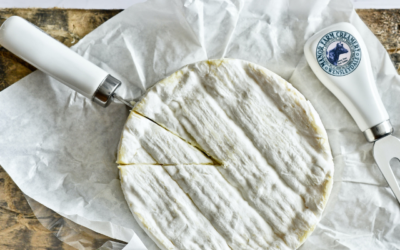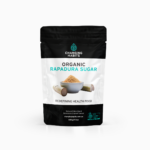For our ancestors food was there to provide a means for survival, and a time to gather and communicate. Their lifestyle was based on survival, as the seasons ebbed and flowed they ate the foods available to them during that time of year. Sweet fruits and fatty meats were available in the summer, while nuts, seeds and lean meats were eaten in the winter. Our ancestors had to do certain things for their survival; they hunted, gathered, moved, ran, walked, slept, walked barefoot, enjoyed sunshine and knew the movements of the moon.
Fast forward to today and most people have the choice as to whether to engage in activities for survival or not. With modern technology life has changed dramatically, we go to the grocery store and buy packaged foods that are filled with ingredients we can’t even pronounce, that are transported from another country, with a use by date of 2 years or worse – indefinite. Seasonal foods are obsolete, sleep is deprived, few know when the moon is full or waning and we’ve been told by science and medicine that the sun is dangerous.
When we start to realise that we have an evolutionary body living in a very modern world and that our biochemistry is not coping (thus the proliferation of disease not only in the elderly but also our young) then we might realise that the modern foods we now eat and the lifestyles we live are two of the main contributing factors in the increase in disability and illness. I can see a small change occurring and many people are becoming more aware.
To help ensure you’re on your way to optimal health, I’ve compiled a list of the top 11 foods you can start eating today. If these are new to you, you could try adding one a week to your diet over the next 11 weeks.
1. Nose to Tail Eating
There is a lot to be said for nose to tail eating, that is, in making use of all the parts of the animal and wasting as little as possible. Unfortunately, we have lost the tradition of eating ‘nose to tail’ as we have become a generation who only buy ‘choice’ cuts of meat. Organ meats, trotters, tails, tongues and tripe were once considered the most ‘prized’ parts of an animal; however in our society we no longer consume them. It’s important to begin eating all parts of the animal – keep the bones and eat the fat, meat and offal, especially liver as it is considered to be one of nature’s most nutrient dense foods. Not only is eating ‘nose to tail’ a more conscious and sustainable way of eating, it’s also more affordable as offal is cheap to buy along with the bones which can be used to make healing and nourishing stocks and broths. Here is a recipe for Turmeric Liver Pate to get you inspired!

2. Seafood
Consume oily fish such as mackerel, salmon, tuna, herring, sardines and especially oysters as they are rich in many nutrients and minerals including iodine, zinc, potassium and B Vitamins. They are also anti-inflammatory and a great source of Omega-3 fatty acids EPA and DHA which reduce the risk of cardiovascular disease. If you are vegan or vegetarian or just choose not to consume seafood, make sure you are consuming Changing Habits Inca Inchi Oil which is a plant-based oil naturally rich in the perfect balance of Omega 3-6-9.

3. Traditional Fats
Consume quality saturated fats such as ghee and butter (preferably grass-fed/organic) and Changing Habits Coconut Oil, and use animal fats including duck, lard and tallow for cooking. These saturated fats are highly heat-stable and best to use in sautéing, baking, frying and roasting. Cold-pressed oils such as avocado, macadamia, olive, almond, walnut and Changing Habits Inca Inchi Oil are not suitable for cooking, they are very delicate and when heated their health properties deteriorate and get destroyed. Use these oils for mayonnaise, pesto and salads.
4. Bone Broth
What was once a traditional, medicinal food in many cultures, has now been lost in our western world. When you cook meat, bones, bone marrow and connective tissues in filtered water with your choice of herbs, spices and vegetables for a few hours you get broth. The flavour, nutrients and minerals from the bones migrate into the water making a wonderfully nourishing and healing liquid. Broth is packed full of minerals and is a rich source of calcium, phosphorus, potassium, sodium and magnesium. Broth is very economical since it can be made from leftover vegetable scraps and bones that you may have otherwise discarded. Another nutritional benefit to drinking broth is the gelatin which is leached from the animal bones during the cooking process. Bone broth also helps maintain and rebuild the structure of our bodies. Use broth as the base for soups, stews, curries, gravies or just as a warm drink.

5. Gelatin
Gelatin is incredibly healing for the digestive tract as it works towards normalising digestion. When we cook our vegetables and meat, the gelatin in the rich broth makes these foods easier to digest, utilise and absorb. Other benefits of drinking gelatinous rich broth include strengthening hair and nails; and reducing, preventing and healing cellulite and wrinkles. If you’re feeling overwhelmed with the idea of making broth, then try our Changing Habits Gelatin which you can use to make panna cotta, jelly, gummies, puddings, pancakes and much more.
6. Leafy Greens and Herbs
The microbes and nutrition in soil are vital for plants to be healthy. The microbes help the plant gather the minerals from the soil in order to grow – without microbes our plants have very few minerals, they become sick and are more easily attacked by pests and disease. Herbicides like glyphosates (roundup) and the like are ‘soil antibiotics’, destroying the very thing that the plants need to be healthy and to uptake the precious minerals the plants cannot make. It’s important to buy organic and spray free produce or grow your own leafy green vegetables and herbs so your body isn’t riddled with toxins. If this is not always possible, we also recommend consuming Changing Habits Supreme Green Blend powder and Changing Habits Colloidal Minerals – a plant derived, cold-extracted liquid. Both of these products are rich in essential minerals, antioxidants, amino acids, trace elements and nutrients that are essential for the body to achieve and maintain great health.

7. Seaweed
Seaweed is highly nutritious and loaded with minerals and vitamins including phosphorous, magnesium, calcium, potassium and zinc and is a great source of Iodine which can be difficult to get elsewhere in the diet. Try incorporating more seaweed into your diet by snacking on dried seaweed sheets, adding it to your soups and stews or sprinkling our Dulse Flakes on top of your fried eggs, salad, soups or stews.

8. Cacao
Cacao helps to release endorphins and serotonin which works as a natural antidepressant. So of course we had to put chocolate on our list! After all it is 100% pure. Cacao is also a wonderful source of antioxidants, amino acids, minerals and nutrients including magnesium, iron, zinc, copper and even Vitamin C. Changing Habits Cacao Melts are a delicious snack, especially when paired with nuts and our Changing Habits Dates.

9. Homemade Fermented Foods
Without your gut flora your body wouldn’t be able to absorb vital nutrients. They help the immune system function and make key nutrients for the body. So it’s absolutely essential we consume ‘cultured’ or ‘fermented’ foods which are teeming with beneficial bacteria (probiotics) for good gut health. Fermented foods qualify as the best pre and probiotic so if you love sauerkraut, kimchi, kefir, yoghurts, sour dough breads and other cultured veggies (and eat them regularly) then you are doing wonderful things for the colonies of bacteria in the gut. If you are not then that’s why we made Changing Habits Probiotics.
10. Eggs
Contrary to popular belief, it’s actually the yolks that are the most nutritious part of the egg, not the whites. Eggs are rich in iodine, B Vitamins, selenium, fat soluble vitamins A, D, E, K and cholesterol. Dietary cholesterol from healthy chickens and ducks only does the body good as it supports the synthesis of balanced sex hormones and supports thyroid health. Eggs are also rich in easily digestible protein. Enjoy custard, frittatas, omelettes, mayonnaise and more with organic eggs.

11. Turmeric
Turmeric is rich in curcumin (the active component), a powerful anti-inflammatory. Turmeric is also rich in manganese, iron, copper, Vitamin B6, potassium and antioxidants. It’s easy to sneak turmeric into dishes like curries, soups, broth, stews and sprinkled on roasted meats and veggies. You can make Golden Milk or you can even add it to Pate, Muesli, Slices and Bliss Balls.

Get ready for the New Year with a new approach! Stock up your pantry and fridge with these 11 must-have foods and you will be well on your way to top health.
Happy changing habits,
Cyndi
December 2015







Very helpful. Thanks!
Are eggs and cacao allowed on the hunter gather protocol elimination phase?
Hi Amy,
Cacao is allowed, unfortunately eggs are eliminated in the beginning though.